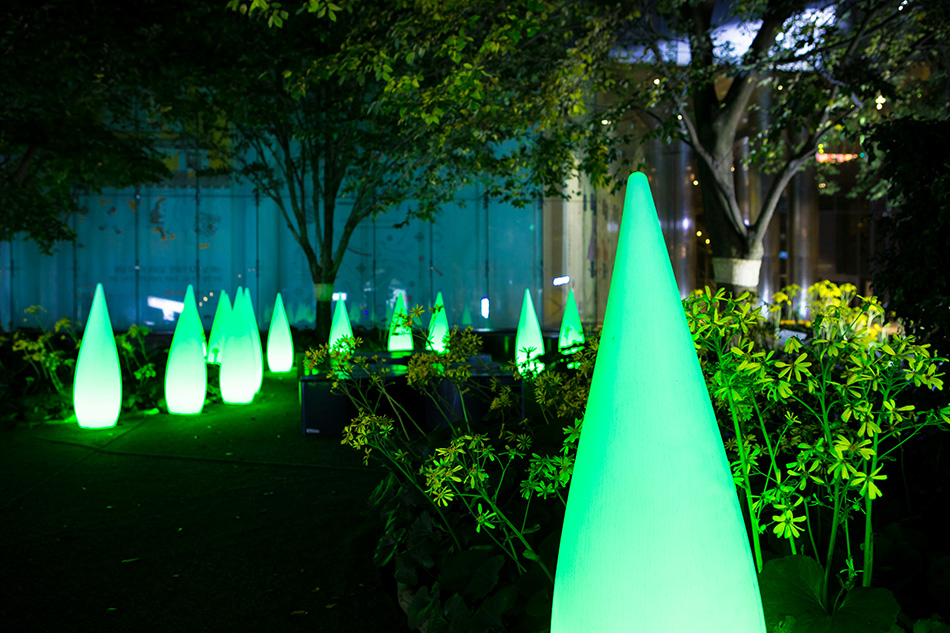Time:2025-05-21
In today’s event industry, creating memorable experiences hinges on balancing aesthetics, functionality, and innovation. Mini neon lights have emerged as a cornerstone of modern event decoration, offering planners unparalleled flexibility to transform spaces while aligning with evolving trends in sustainability and personalization. This article explores how these compact lighting systems are redefining event design, their strategic advantages, and actionable insights for maximizing visual and emotional impact.
The Transformative Power of Mini Neon in Event Design
Mini neon lights bridge the gap between practicality and artistry, serving as dynamic tools for:
Spatial Definition: Highlighting key areas like entrances, stages, or bars with subtle glows or bold outlines.
Brand Storytelling: Custom logos, slogans, or thematic motifs that reinforce event narratives or corporate identities.
Mood Crafting: Adjustable colors and brightness to evoke emotions—soft pastels for intimate gatherings, vibrant hues for high-energy parties.
From weddings to product launches, mini neon adapts to any event type, making it a universal design asset.

Innovations Driving Mini Neon Adoption
Modern mini neon systems integrate cutting-edge features tailored to diverse event needs:
Modular Flexibility: Interconnectable strips or panels that scale to fit small vignettes or expansive installations.
Wireless Control: App or remote-operated settings for dynamic effects like color transitions, strobing, or dimming.
Weather-Resistant Builds: Durable silicone coatings for outdoor events, resisting rain, humidity, or UV exposure.
Battery and Solar Options: Cordless designs ideal for remote venues or eco-conscious events aiming to reduce energy reliance.
These advancements empower planners to innovate without logistical constraints.
Strategic Benefits for Event Professionals
Cost Efficiency: Reusable kits that reduce long-term expenses compared to single-use decor.
Guest Engagement: Interactive installations (e.g., touch-reactive walls, motion-synced pathways) that encourage participation.
Social Media Amplification: Photogenic neon elements that drive attendee-generated content and viral visibility.
Sustainability Alignment: Energy-efficient LEDs and recyclable materials supporting green event certifications.
Trends Shaping 2024 Event Neon Aesthetics
Minimalist Elegance: Slim profiles and monochromatic schemes for modern, clutter-free sophistication.
Cultural Fusion: Integrating traditional patterns (e.g., mandalas, tribal art) with neon for multicultural celebrations.
Retro-Nostalgia: Vintage fonts and neon “open” signs for themed parties or throwback corporate events.
Adaptive Lighting: Systems that auto-adjust based on ambient light or attendee movement using IoT sensors.
Choosing the Right Mini Neon Supplier
Key considerations include:
Customization Capabilities: Ability to tailor colors, fonts, and shapes to match event themes or brand guidelines.
Durability Assurance: Waterproof and impact-resistant designs for high-traffic or outdoor use.
Logistical Support: Suppliers offering setup guides, rental programs, or on-site technical assistance.
Ethical Practices: Transparent sourcing of eco-friendly materials and carbon-neutral shipping options.
Overcoming Common Decoration Challenges
Space Constraints: Using bendable neon strips to contour around architectural features or tight layouts.
Power Management: Opting for solar-charged or long-life battery units for venues with limited electrical access.
Theme Cohesion: Pre-event mockups to ensure neon hues complement existing decor palettes and lighting.
Case Studies: Neon Success Across Event Types
Corporate Gala: A tech firm’s annual summit featured neon-lit hashtags and data visualizations, boosting social engagement by 65%.
Community Festival: A city fair used solar-powered neon arches to guide attendees, later repurposing them for public art displays.
Wedding Reception: A couple’s neon monogram became a focal point, later reused as home decor and anniversary memorabilia.
Future Directions in Event Neon Technology
AI-Driven Personalization: Tools generating neon designs based on attendee preferences or real-time feedback.
Biodegradable Neon: Plant-based materials that decompose post-event, aligning with zero-waste initiatives.
Holographic Integration: Layering physical neon with 3D projections for hybrid or virtual event experiences.
Conclusion
Mini neon lights for event decoration are more than fleeting trends—they are essential tools for crafting immersive, adaptable, and sustainable experiences. By leveraging their versatility, planners can transcend traditional decor limitations, creating events that resonate visually and emotionally.
To stay ahead, prioritize suppliers who blend innovation with eco-conscious practices, ensuring every neon glow not only illuminates your event but also reflects its purpose and values.